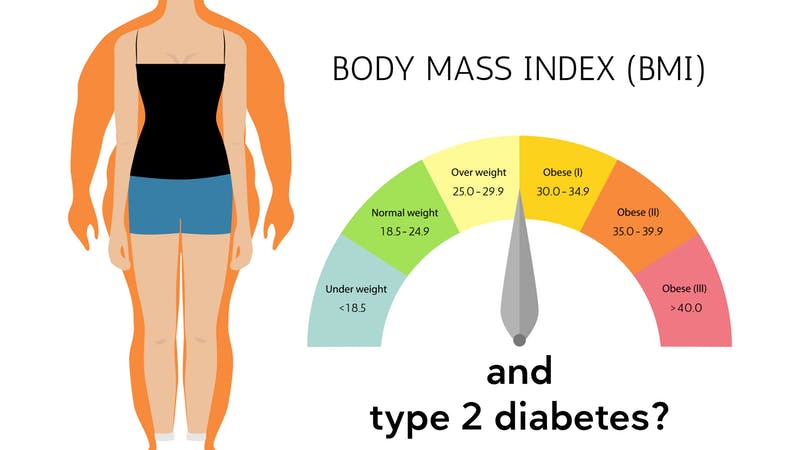Type 2 diabetes(T2DM) is a situation when our body becomes resistant to insulin or when pancreas are not in a position to produce enough insulin. Ideally Insulin helps your body cells to convert glucose from the food you eat into energy. Initially, pancreas release more insulin to try to push glucose into your cells. However when we keep on consuming refined & sugary stuff, we create a lot of pressure on our Pancreas & eventually cannot keep up & glucose build up in your blood stream instead. There are lot of factors that leads to T2DM:
- Genes: In a lot of cases, your DNA impacts how you make insulin.
- Overweight or obesity: This can lead to insulin resistance specifically if you carry weight around middle. However this is not the only reason for diabetes.
- Metabolic Syndrome: People with insulin resistance usually have a group of conditions such as high blood sugar, extra weight, high blood pressure, high cholesterol(LDL) & triglycerides.
- Too much glucose from the liver: When your body has low sugar, your liver makes & sends glucose. After you eat, your blood sugar goes up & liver slows down & stores glucose for later.However some people’s liver won’t.
It is not necessary that obesity leads to T2DM & you may also find lean people having T2DM. It is even strange to learn that according to a recent research obesity even protects certain people from attracting T2DM.
Let us dig in detail about body fat! Body fat is not just a lump of inert tissue.It is a metabolically active endocrine organ that secretes inflammatory cytokines & hormones. The first step in the process is abnormal gain of fat mass that usually occurs due to excess consumption of wheat, fructose, industrial seed oils & other dietary toxins. As fat mass increases, more leptin is released( Leptin gives signal to the brain to decrease appetite, increase metabolic rate & physical activity). However too much release of Leptin causes Leptin resistance.
Leptin resistance causes Free Fatty Acids(FFA) to spill over other tissues such as pancreas, heart & liver instead of fat cell which leads to inflammation & toxicity since FFA does not belong to these tissues & damages them when present.
Further obesity causes excessive growth of fatty tissues in two ways:
- Increases the size of fat cells(hypertrophy)
- Increases the number of fat cells.
Eventually, these fat cells become unstable & rupture releasing their fat content & causing inflammation as the body attempts to clean up dying fat cells. The end result of this lipotoxicity & inflammation is insulin resistance which is defining feature of T2DM. However as mentioned earlier not all obese people are at risk of diabetes since research are found that 1 in 3 obese people are metabolically healthy which essentially means that fasting glucose, triglycerides & other metabolic indicators are normal. These people are also referred as Metabolic Healthy Obese(MHO).
The question is- Is this really possible?
Honestly, we really do not know! However there are certain possibilities. Not all obesity is the same. There are two main areas where we store fat: Subcutaneous( under the skin) & visceral( in the abdominal cavity). Visceral fat is distinguished from subcutaneous by large waist circumference & large waist to hip ratio. The amount of visceral fat is much more important than body mass index in predicting whether you will have T2DM or metabolic syndrome.
You may be astonished to know that obesity is actually a healthy response to high blood sugar. This conversion of high glucose to fat is a response to protect your body’s vital organs such as liver & brain from glucose poisoning. However this does not work for long since fat cells can absorb glucose up to a certain level beyond which metabolic dysfunction sets in.
Subcutaneous fat has much larger capacity to store glucose as fat as compared to visceral fat. This clearly explains why men( possesses smaller amount of subcutaneous fat) develop wheat belly much earlier & faster than women.
Visceral fat has not only small storage capacity but also is more active to metabolic reaction. It is associated with higher production of inflammatory cytokines. Visceral fat is also exposed to sudden pressure variations such as cough, physical exercise etc..that can cause them to rupture easily than subcutaneous fat cells. Such rupture causes inflammation.
Therefore people with low BMI are also at risk of T2DM & cardiovascular disease if they have a high amount of visceral fat.
MHO, although at low risk to attract diabetes & cardiovascular diseases are likely to die the same rate as those who do due to reasons such as traumatic injuries.
That’s it’s still a good idea for the overweight and obese to lose weight, provided they do it in a responsible way that doesn’t include severe caloric restriction (which won’t work in the long-term anyways, and can actually predispose towards increased weight gain in the future).

Thanks for this inspirational and very well written article. I want to add how I lost weight effortlessly